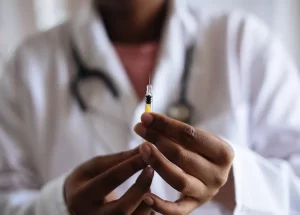 In the ongoing battle against drug abuse, prevention initiatives play a vital role in safeguarding individuals and communities from the devastating effects of substance misuse. These initiatives encompass a range of strategies aimed at deterring drug use before it begins, intervening early to address risk factors, and promoting healthy behaviors. Understanding the significance of drug abuse prevention initiatives is crucial in fostering a safer and healthier society.
In the ongoing battle against drug abuse, prevention initiatives play a vital role in safeguarding individuals and communities from the devastating effects of substance misuse. These initiatives encompass a range of strategies aimed at deterring drug use before it begins, intervening early to address risk factors, and promoting healthy behaviors. Understanding the significance of drug abuse prevention initiatives is crucial in fostering a safer and healthier society.
Prevention initiatives serve as proactive measures to reduce the prevalence of drug abuse and its associated consequences. By targeting various population groups, including youth, families, schools, and communities, these initiatives aim to raise awareness about the risks of drug use and equip individuals with the knowledge and skills needed to make informed decisions. Education is a cornerstone of prevention efforts, as it empowers individuals to recognize the dangers of drug abuse and develop positive coping mechanisms.
One of the key roles of drug abuse prevention initiatives is to address risk factors that contribute to substance misuse. These risk factors can include environmental influences, such as peer pressure and exposure to drugs, as well as individual factors like poor impulse control and mental health issues. Prevention programs work to mitigate these risk factors by promoting protective factors such as strong family bonds, supportive social networks, and access to positive opportunities for personal growth.
Another crucial aspect of prevention initiatives is early intervention, which involves identifying and addressing signs of drug use before they escalate into more serious problems. Early intervention programs are designed to identify at-risk individuals and provide them with the support and resources they need to make healthier choices. By intervening early, these programs can prevent the progression of drug abuse and minimize the negative consequences associated with substance misuse.
Prevention initiatives also play a role in promoting healthy behaviors and lifestyles that are incompatible with drug use. By promoting positive alternatives to substance abuse, such as sports, arts, and community involvement, these initiatives help individuals develop skills, interests, and social connections that contribute to their overall well-being. Additionally, prevention programs may focus on building resilience and coping skills to help individuals navigate life’s challenges without turning to drugs as a solution.
Community involvement is essential to the success of drug abuse prevention initiatives. Collaborative efforts between government agencies, schools, healthcare providers, law enforcement, and community organizations can maximize the impact of prevention programs and reach a broader audience. By working together, these stakeholders can pool resources, share expertise, and coordinate efforts to address drug abuse comprehensively.
In conclusion, drug abuse prevention initiatives play a crucial role in promoting public health and safety by addressing the root causes of substance misuse and empowering individuals to make healthy choices. Through education, early intervention, promotion of healthy behaviors, and community collaboration, these initiatives contribute to the creation of a society where drug abuse is less prevalent, and individuals are better equipped to lead fulfilling and productive lives.

 Drug abuse prevention is a collective effort that hinges significantly on the choices made by individuals. In the face of widespread substance abuse challenges, recognizing the profound impact of personal decisions on prevention initiatives becomes crucial. This article delves into the ways individual choices can shape and influence the broader landscape of drug abuse prevention.
Drug abuse prevention is a collective effort that hinges significantly on the choices made by individuals. In the face of widespread substance abuse challenges, recognizing the profound impact of personal decisions on prevention initiatives becomes crucial. This article delves into the ways individual choices can shape and influence the broader landscape of drug abuse prevention.